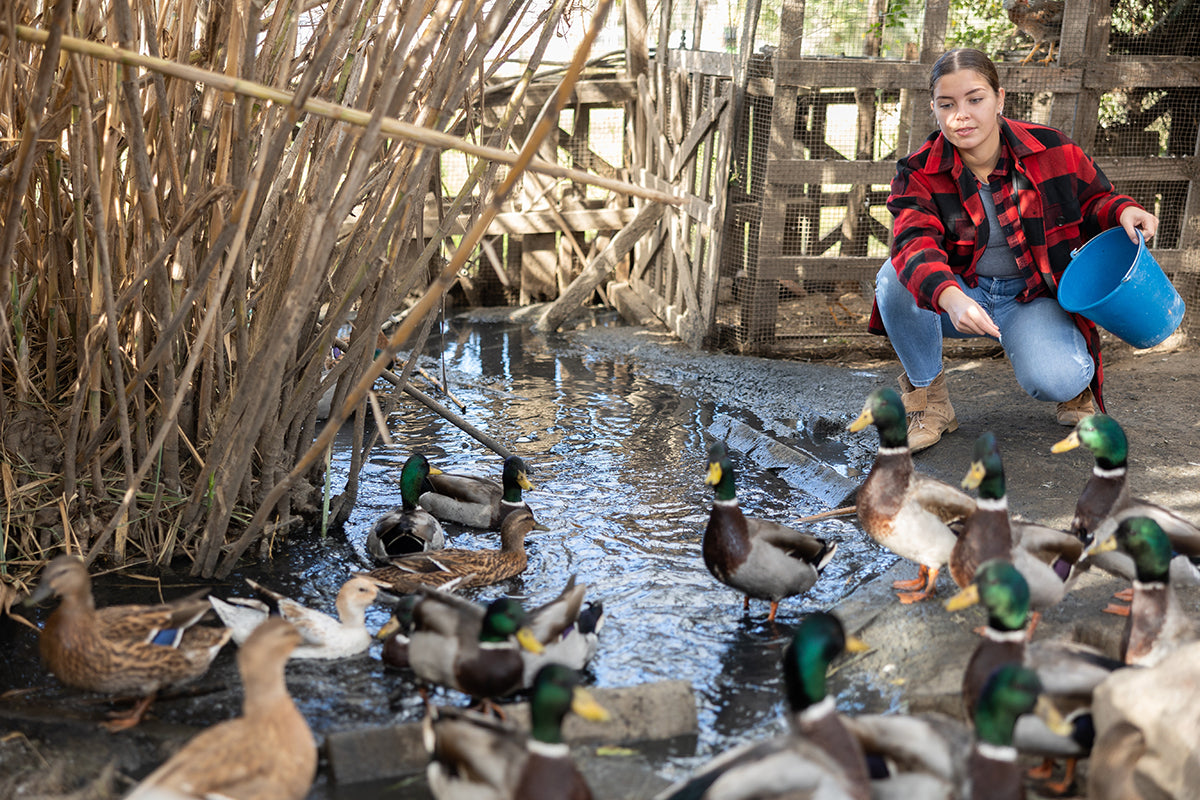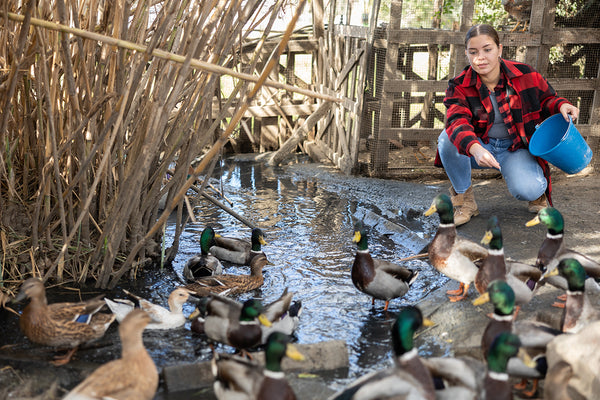
Duck Pond DIY
Your small urban homestead is growing, and you think it's time to add a few ducks. Great! You're probably already thinking about what to feed them and how to shelter them. But what else do you need? A pond!

Very few things thrill ducks more than playing in water. And they don't need a lot of it. Ducks are happy as long as the water's deep enough and large enough to swim in, dip their heads in, and happily splash around with their wings. You can raise ducks without giving them a place to swim, but it's a natural and healthy activity for ducks. It's really best to give your birds some type of pond.
Of course, not every property has a natural pond or water feature, but the good news is that artificial ponds are a great substitute. Creating a man-made duck pond on your land — or even in a smaller yard — can be a big job, but the process is fairly straightforward. Below are the basics of duck pond DIY and what you can expect during the build.
In-ground Duck Ponds
If your heart's set on a large pond, something grand, you may need to hire a landscaping professional with the equipment and experience to handle the job, and you'll need a budget equal to the task. However, smaller ponds, think smaller than 15 feet in diameter, are certainly within the reach of a casual DIYer's budget and skills.
Before you start digging, call your local utility providers (water, gas, phone, internet, etc.) to mark the locations of underground cables and pipes. Then, mark a rough shape on the ground with spray paint, rope, or garden hose. You can make it perfectly circular or oval, or get creative and make a unique shape that fits your property's landscape. But be sure to keep the edges rounded and natural. A simple duck pond probably only needs to be one and a half to three feet deep, so it's possible to dig this by hand. Make no mistake — it will be a job. So, make a party of it, and get friends and family to help.
Once you've dug the hole, your pond needs a waterproof liner to ensure the water is retained and doesn't seep back into the ground when you fill the pond. The liner is essentially a thick plastic sheeting specifically manufactured for building small ponds. Keep the edge of the liner in place and hidden by a perimeter of pea gravel and other landscaping stones to give a manicured look.
Tiny Portable Pools
If you're looking for a fast and simple option or just a temporary solution until your in-ground pond is finished, you can provide your ducks with a fun (though very small) above-ground place to play. The simplest and least expensive of your options, this type of pond could be as basic as a small pet pool — something like the K&H Dog Pool & Pet Bath. This pool is available in multiple sizes, with the largest suitable to give your ducks room to splash and bathe. You can even add an optional canopy to provide some shade.
The upside to small above-ground pools is that they are relatively inexpensive, easy to set up, and can be moved from place to place as needed. The downside is they need to be cleaned daily to be sanitary for duck use.
Maintaining Your Duck Pond
Because your DIY duck pond is artificial, it won't collect water like a natural pond. And you'll need to add water to the pond when the level drops from evaporation. How often will depend on the temperatures and humidity in your area. And if you're using a portable pool, you'll need to empty and refill the portable pond every day. In either case, a simple garden hose is a good solution for filling your small pond. In cold weather, a heated hose can help, as it saves you the effort of draining the hose between uses.
Filters and Aeration
Ideally, you'll install a filtering and aeration system in your in-ground pond. (The specifics will depend on the size of your pond.) In general, a motorized filtering system that cycles the water through cleaning filters and returns it to the pond will help keep the water sanitary and looking its best.
Some ponds also incorporate a waterfall or similar feature for aesthetics. This also helps keep the water in the pond moving to combat stagnation or even insect breeding. To help keep mud at bay, consider constructing a drainage system around the edge. This can be as simple as a perimeter of PVC drain tile around the pond to help divert the excess water that drips off your ducks as they leave the pond. For a deeper dive, you might find it handy to educate yourself on the basics of pond management.
Winter Prep
In the winter, keep your pond from freezing by installing a K&H Thermo-Pond Perfect Climate Deluxe Pond Deicer. The heat source won't harm your pond's liner, and you can choose just the right amount of wattage (heating power) for your climate. Remember, your ducks will still need a clean, fresh water source for drinking that's separate from the pond. Providing proper duck feeders and waterers like a K&H Duck Waterer is important for their health.
You can build the duck pond of your dreams!
Building a DIY duck pond is no small project, but there's a great deal of satisfaction in seeing your ducks enjoying your hard work. With the right planning, liner, and maintenance tools, your duck pond benefits your ducks and can improve your property as a whole.



